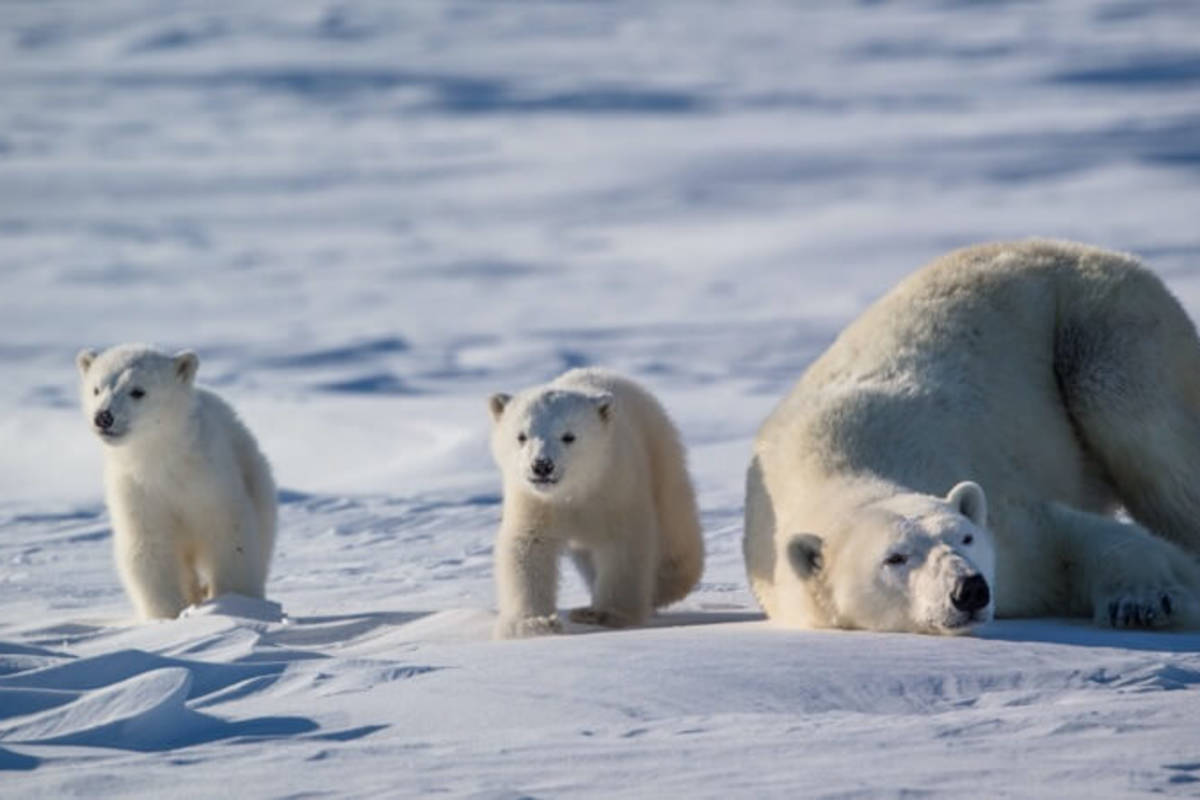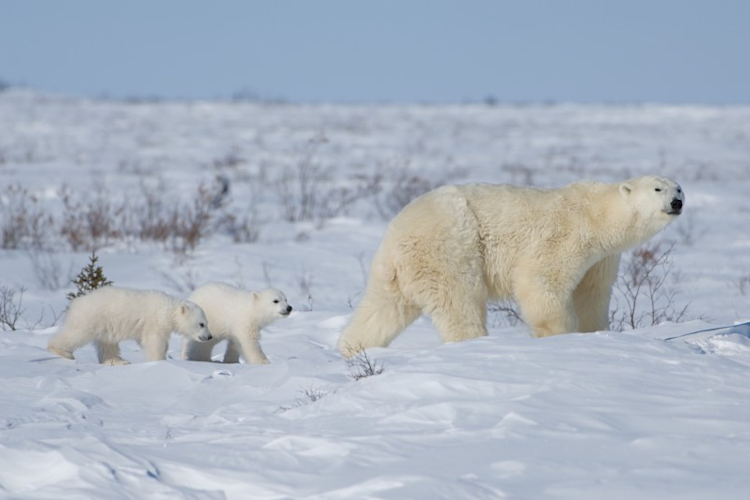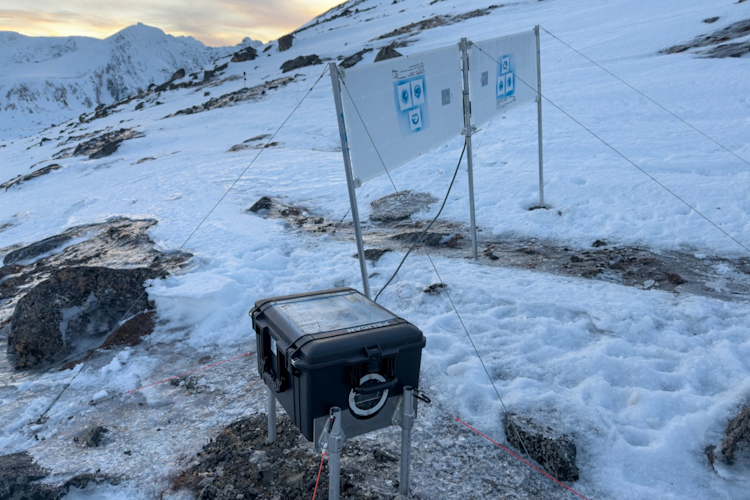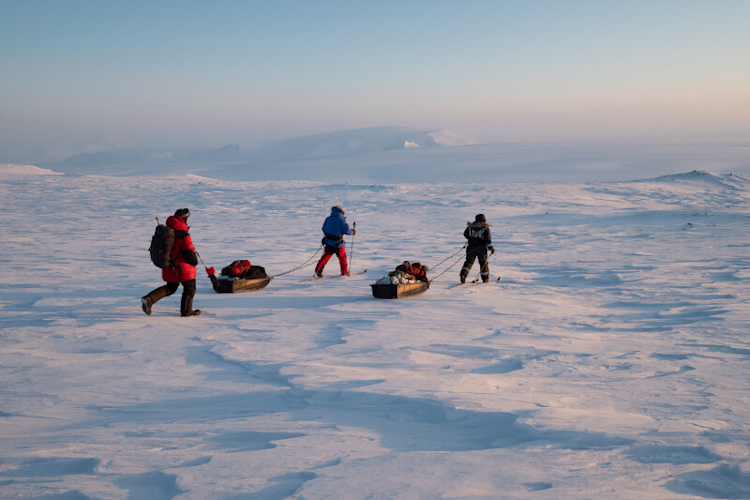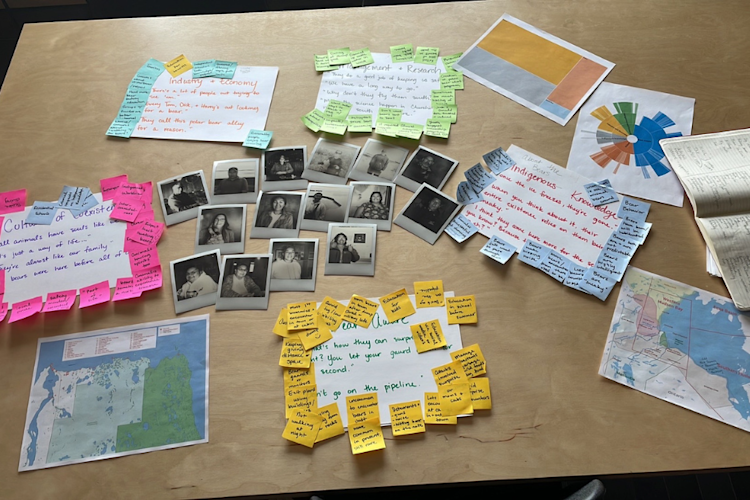Spring is a season of plenty for polar bears, a time when plump seal pups make easy prey. It’s also mating season, a period when female polar bears pair up with males on the sea ice for courtships lasting up to two weeks. After mating, the female maintains the fertilized eggs, but they don’t begin to grow until six months later, if at all. The eggs implant in the womb and begin growing into cubs only if the female bear is healthy, with a high level of fat reserves—a process called delayed implantation.
Digging the den
The eggs implant in autumn, as the day shorten and temperatures drop. This is when pregnant female polar bears throughout the Arctic begin migrating to den locations to give birth to their cubs. While some give birth in snow dens on the sea ice, the majority den onshore, where they dig into snow drifts (or sometimes peat moss or earth along river banks) to build shelters. Some are experienced, having denned numerous times, while others partake in this activity for the first time. It’s not something they’ve ever seen or learned from their mothers; the instructions are written entirely into their DNA. This is the midway point in the reproductive cycle for a pregnant female polar bear.
